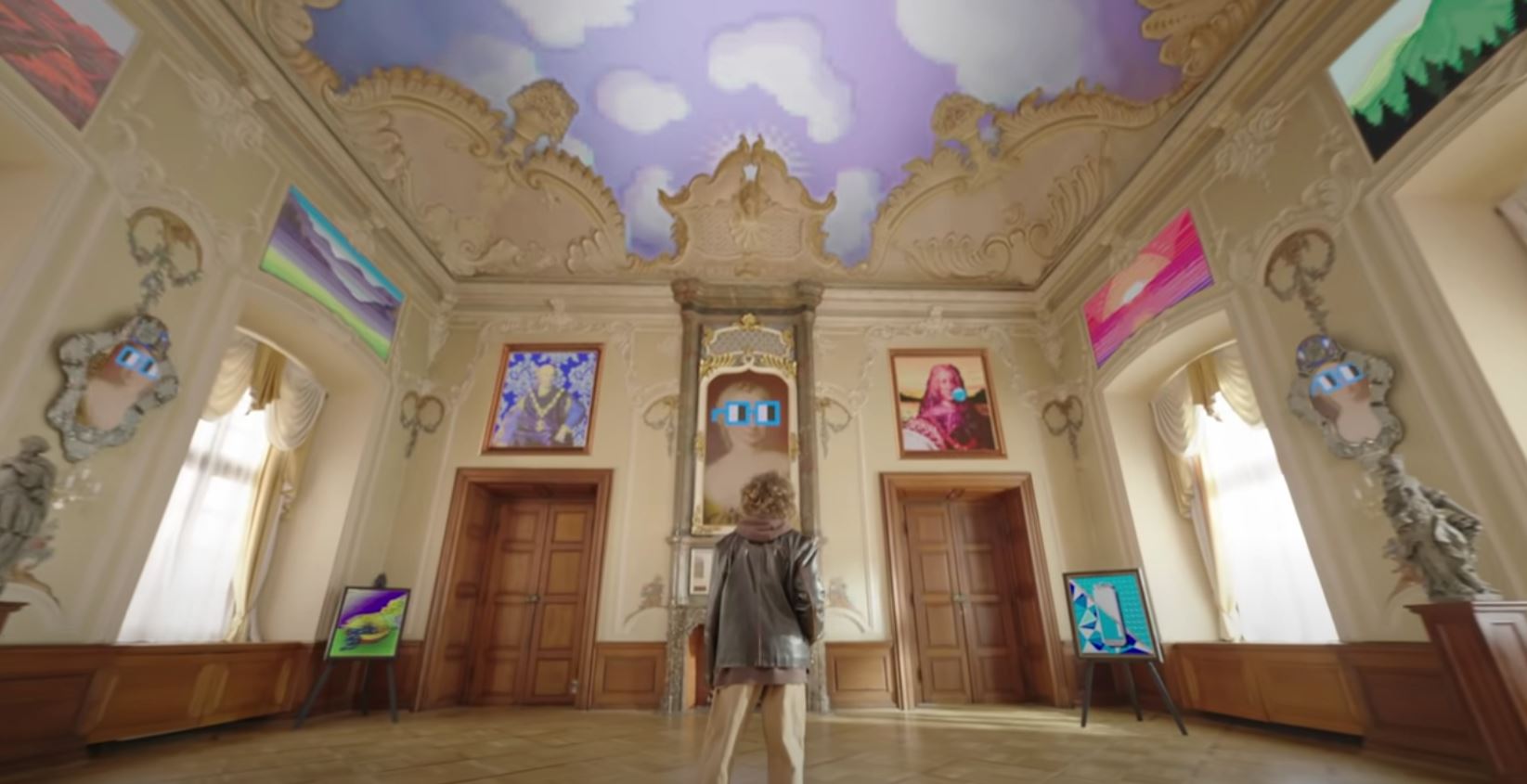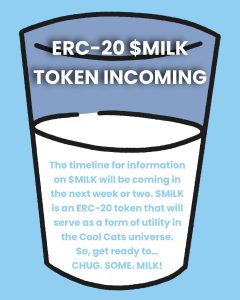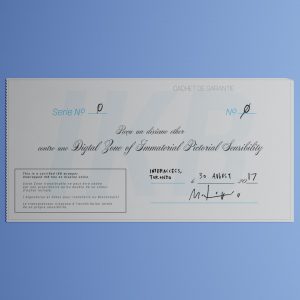Lenses on Glitch, Part 1
Four artists share the tools and approaches they have developed for working with glitch.


CryptoPunks are the flagship project of the NFT movement. Their release in 2017 was a turning point in the web3 timeline, and their 8-bit aesthetic deliberately channeled the experimental, “punk” ethos that characterized the early crypto community. CryptoPunks have remained at the center of whatever narratives happen to be dominating the discourse around NFT art, culture, and economics at any given moment. On Friday, Yuga Labs announced the purchase of the intellectual property of CryptoPunks and Meebits, another Larva Labs collection, for an undisclosed sum. It was a profoundly disappointing twist to at least two of those narratives.
One of these narratives is about creative empowerment. We’ve been told that after decades of dealers, middlemen, or label execs trapping artists in inequitable relationships that lead not just to financial exploitation but also creative compromise, artists now have the means to take complete control of their art and their markets. Now, the creators who pioneered the use of a technology that enabled this (still-hypothetical) revolution have decided: “Eh, we’d rather not.”
Never let them know that by “community” you really mean “future customers.”
Of course, any creator has the right to decide what they’d like to do with their creative freedom, even if that’s selling it for a massive gain. But the Larva Labs decision is still disappointing for those of us who attribute their creation with unique importance to a movement that is still defining itself. It’s all the more disappointing because Larva Labs was facing absolutely no financial pressure to cash in; the sale of Meebits last year brought in almost 80 million USD.
The other narrative is about “stewardship,” which has come to mean a creator’s obligation to the market. Over the past few months, a small but noisy group of NFT collectors have complained mightily about the light touch that Larva Labs has demonstrated in flexing their ownership rights over CryptoPunks, bemoaning the fact that Larva Labs retains those rights at all. Their argument typically contrasts the Larva Labs approach with the more aggressive branding efforts seen with other collections: CryptoPunks are not being featured in Super Bowl ads (like Nouns), they do not offer holders access to exclusive parties on boats (like Yuga Labs’s Bored Ape Yacht Club), and they are not generating financial derivative tokens (like Cool Cats). For these collectors, the failure of Larva Labs to thirstily seek out financialization opportunities for their work violates their responsibility to inflate the cultural and financial value of the project in the shortest possible timespan. Given their own inability to financialize the IP, Larva Labs ought to abdicate their rights to these works and allow the community of holders to “build” the project by creating their own derivatives and partnerships. According to this second narrative, this is the way: financialization is stewardship. This narrative is blatantly disingenuous.
There are interesting arguments to be made about the merits of CC0-licensed projects. And in many cases, the use of that license can foster communal creation. I also take no issue with anyone who sets out to make social tokens or derivatives. Those creators consciously decided to produce market value, and some of them have been very successful and even innovative in doing so. It feels almost too obvious to say this, but a plan for financialization should not be a prerequisite for releasing a project in the crypto space. No collector has been treated unjustly if they’ve invested in a project that didn’t come with a roadmap to riches and didn’t implement one retroactively.
The pressure exerted by some collectors on Larva Labs to relinquish control of their creation was, quite simply, a con job. For an influencer working through the most basic motivations in this space, it’s a simple play: take a project from which you have already profited handsomely, then imagine a mechanism through which you could profit even more without actually selling the precious asset, and finally, drape your argument in the sheep’s clothing of “community.” Never let them know that by “community” you really mean “future customers.”
Anon, your Louis Vuitton handbags are Veblen goods precisely because they are not found in partnerships with JC Penney.
On a business level, the influencers and would-be media-moguls applying this pressure seem to have a fundamental misunderstanding of how value accrues to Veblen goods, those luxury items whose demand increases proportionally to their cost. Veblen goods, like works of art, attain value largely through the contexts and adjacencies in which they are experienced. Accordingly, these works are defined as much by where they’re not found as by where they are. Anon, your Louis Vuitton handbags are Veblen goods precisely because they are not found in partnerships with JC Penney. You can thank the singular oversight of the brand stewards at LVMH for the assurance that they probably never will be. (I don’t mean to espouse any sort of elitism here—I’m just telling it like it is.)

So to the influencers dreaming of turning their NFT collection into a media empire: good luck explaining to the Roland-Garros partnership office that your Meebit is characteristically distinct from the one your fellow collector has licensed to be the mascot of Soapy Dave’s Car Wash, or the one that another anon has silkscreened onto ten thousand cheap T-shirts for sale in the parking lot outside a Post Malone concert.
Mark Rothko famously canceled a lucrative contract to paint murals for the restaurant at the Four Seasons in Manhattan when he decided that his art’s power would be diluted by hanging in an exclusive eatery as an ornamental afterthought. Establishing an emotional context for an artwork is not quite the same as establishing a socioeconomic context for a designer handbag, but the mechanisms are similar. Stewardship—the kind that enhances value, whether financial or artistic—means saying “no.” A lot.
There are many different valid approaches an artist can take with the stewardship of their creation. The creator I think about often as the greatest champion of his own work is the one who has taken the most approach: Bill Watterson, creator of Calvin and Hobbes. The comic strip was one of the most beloved cultural touchstones of the late ’80s and early ’90s. In the face of the incredible pressure from newspaper syndicates to cash in on his creation, Watterson decided that it was in the best interests of his work to deny all applications for licensed derivatives of his work. According to the documentary Dear Mr. Watterson (2013), he may have left up to 300 million USD on the table by refusing to license out his work.
Stewardship—the kind that enhances value, whether financial or artistic—means saying “no.” A lot.
For many people, CryptoPunks embodied the sense of imagination and mischief that came with the advent of web3. CryptoPunks were an early beacon for envisioning how the new protocols could change the way we think about community, identity, provenance and artistic innovation. By selling their creation, Larva Labs has made capitalization the endgame of all that imagining.

I’m part of the generation raised on Watterson’s work. It beautifully captures the spirit of imagination and mischief that colors childhood. Now that I’m an adult, and those sensibilities have largely departed my jaded adult soul. Despite this, sometimes I can pick up one of my Calvin and Hobbes anthologies and recapture a spark of it. There are no Happy Meal toys that attach themselves like barnacles to my memories. The impossibility of authorized merchandise somehow magnifies the core values of the artwork and the direct connection I feel with them. In the comic strips, Calvin’s imagination could transform the same cardboard box into any sci-fi device his story needed. A tame incline in his back yard became a life-threatening toboggan course. By keeping merchandise off the shelves, Watterson never sold Calvin to me; he let me be Calvin. He encouraged us to use our imaginations to transform our own homemade puppet into our favorite cartoon tiger. The value that Watterson created by simply doing nothing except genuinely care about his creation is worth something more than money.
Digital Zones of Immediate Pictorial Sensibility, my first NFT project, was about how all artworks are subject to two kinds of ownership: the legal kind, which represents the right to buy and sell and turn a profit on a piece of work; and the spiritual kind, which is a deep and ineffable connection to the work. You couldn’t sell the latter kind if you had a hundred buyers lined up. My work was directly inspired by Yves Klein, who probably understood better than any artist in history the duality of the artwork-as-asset and artwork-as-experience. He understood that this second type of ownership is an inseverable bond between the collector and the artist. That bond is a sensibility that is created not just through an individual work, but through an artist’s entire career. To create that bond, an artist must have total control over their work. That bond requires the type of creative empowerment that we were told NFTs would protect.
Larva Labs, who created something unique and exciting that many people believed in, has decided to relinquish that bond with their work and their audience, in order to send it on a course to maximize profits. I never imagined it was possible to rug your collectors on that level. But here we are. I also know that there are more people here who are genuinely trying to veer off that path. The real punks are still out here. To them, I propose: let’s go exploring.
Mitchell F. Chan is an artist based in Toronto.
